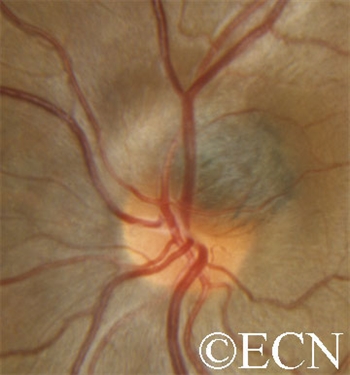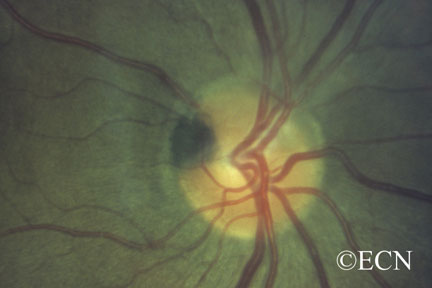By Paul T. Finger, MD
Description
If you are newly diagnosed with a primary choroidal “intraocular” melanoma, you are likely to have no signs or symptoms of metastatic melanoma. Even with total body PET/CT imaging, less than 4% of patients are found to have their melanomas spread to other parts of their body at the time of diagnosis of their eye tumor.
But, many more will be found to have metastasis over the following years. This is because there is no test that can find microscopic metastatic tumors. Thankfully, many patients diagnosed and treated for choroidal melanoma do not develop metastatic melanoma.
Tumor size (primarily largest tumor diameter – LTD) is the most important predictor of a patient’s risk for metastatic melanoma. It makes sense that treatments that limit the tumor’s ability to enlarge will decrease the chance of metastasis. This is why most eye cancer specialists believe destroying or removing an eye cancer offers the best method to prevent future spread from that tumor.
Treatment of the intraocular melanoma is not thought to affect micrometastasis (too small to find) already present at the time of the eye treatment. This is why patients need periodic general medical examinations (surveys) after treatment for their intraocular melanoma.
Symptoms
Many patients found to have metastatic choroidal melanoma have no symptoms. This is why patients should have periodic medical examinations by their general medical doctor or oncologist. Follow up physical examinations; blood tests and radiographic imaging (x-ray, MRI, CT, abdominal ultrasound or PET/CT) have been performed.
When liver metastasis occurs, liver-associated symptoms include abdominal fullness, back pain, and loss of appetite. Other patients are first noted to have a relatively painless nodule on or under their skin. Weight loss, difficulty breathing or weakness are other symptoms.
Diagnosis
With current diagnostic techniques 85% of metastatic choroidal melanoma will be initially found in the liver. Liver metastases can be discovered by blood tests (liver function) or abdominal imaging studies when a patient has no symptoms. Other patients may notice abdominal fullness, discomfort and a loss of appetite. Though the liver may be the first place tumors are found, it is likely that other organs are affected. Your doctor should look for other tumor sites (e.g. subcutaneous nodules, lung, bone and brain metastasis). If a liver or skin metastasis is suspected a needle biopsy can be used to aspirate tumor cells for cytopathologic examination.
Treatments
When the liver is (initially) the exclusive site where metastatic choroidal melanoma is found, most patients have diffuse or multi-focal tumors that cannot be removed. Treatment options depend on the number, size, location, rate of tumor growth and how they affect liver function.
General Principles Concerning the Treatment for Metastatic Choroidal Melanoma:
Local Surgery: If a patient has a slow growing solitary metastasis, surgical excision may be an option. There have been no evidence-based studies that prove whether this type of surgery prolongs survival or improves the quality of life of patients. All patients who undergo surgery for a solitary liver, lung or brain metastasis have to recover from a major surgery.
Systemic Chemotherapy: When tumors are found in multiple parts of the body, then treatment is directed at the whole body. In these cases, your doctor may offer injection of standard intravenous chemotherapy. Unfortunately, standard chemotherapy drugs usually do not cure metastatic choroidal melanoma. There are clinical trials evaluating new chemotherapy drugs that may be more effective.
Chemo-embolization: This treatment involves injecting a combination of chemotherapy and particles into the arteries that feed the metastatic tumors within the liver. For example, cisplatin chemotherapy and polyvinyl sponge particles or radioactive beads are injected intra-arterially to the liver. Side effects have typically included fever; right upper quadrant abdominal pain, elevation of liver enzymes and paralysis of the intestine lasting 1 to 2 days after the procedure. It is important to understand that this is a local treatment aimed at shrinking the liver metastasis and prolonging life. It is not typically curative.
Biologic Therapy: Biologic therapy treats cancer by helping the immune system function better. The immune system is your body’s natural defense. It is a network of organs and cells distributed throughout your body. It not only defends against bacteria and viruses but also helps find and destroy cancer cells. Recent biotherapy drugs focused on metastatic cutaneous melanoma are promising.
Observation
It is a patient’s right to choose or refuse treatment. Since many of the previously mentioned treatments can decrease a patient’s quality of life, each decision to treat must be weighed against potential side effects.
You should always discuss the risk of possible side-effects and the potential benefits with your medical oncologist prior to considering each treatment.
Related links












